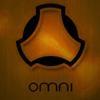Do I really need to go into every single texture map?
Considering there is a infinite amount of texture maps I would say: no.
A texture provides you with 4 channels multiply by an X and Y value (RGBA)* (XY); with some creative thinking there is nothing you cant store in a map and if you add vertex color also you can do any thing.
The important thing about a map is that some data is stored per pixel, so that the shader can allow each pixel to work as if it had it's own material.
Use what you need but more importantly, what you know.
Just converting a un-modified photo to a texture map has been proven to break immersion more than not using textures at all.
If you are new to texture maps there is a few beginner tips that will help:
[spoiler]
Use specular(Old shader)/ reflection set(BPR) when you have a object made of more than one material.
A single material object can just use the material value.
Dust and dirt count as a second material, even on dull rough objects like rocks.
A metal will always need specular/ reflection set.
Details on each map:
The old shaders use the specular set, that is:
Diffuse, the color and diffuse light effects.
Specular map, this is a fake reflection of lights in the scene. higher settings will resort in a more clear reflection of the light.
Gloss map, how blurry and large the fake light reflection is.
Specular color, this tints the color of the specular. Metals reflect some of there color and there is many other materials that use these.
The new BPR shaders use the reflection set:
Albedo, the color; you can even use single color values with no other details.
Metal map, how much metal is in the object. This will also effect other things, that is a bit advanced.
Gloss map, how rough a surface is. Unlike the specular gloss on old shaders this will effect reflection.
BPR has a specular set with a real gloss map, the specular value just allows to tint and pop the details in the reflection.
Using the Old or new BPR to make a metal takes at least 4-5 texture maps, the BPR metal shader can do it in 3 and with much less work and a better result.
Optional:
Normal map, normal control light and shading -how humans see things- allowing for a object to look more detailed than it is. Many people will say it's not a optional texture, doesn't work if there is no shading or at least reflection.
Ambient occlusion map, the name says it all. basically darkens depending how near objects are to each other. This texture is used a lot, takes a lot of skill to do. Xnormal is the best software for baking AO but not worth the effort.
Fresnel map, often just a gradient value or texture. Effects reflection and light on edges of objects. You can't make a realistic glass or metal without Fresnel.
Emission map, on the old shaders this will just turn off the shading making it bright no matter how little light is in the scene, with some of the BPR engines this will cast actual light.
Shadow maps, shows the location of shadows, used in static scenes.
Light map, used to show bright spots on the texture, works like a emission map. Rarely will it cast light and is often a combo with a shadow map.
Mirror map, depends on the engine on how it works, decides how reflective surfaces are. In BPR shaders this is done on auto for you.
Height map, the little brother of a normal map. A normal maps stores XYZ as RGB a height map stores Z as BW.
Detail maps, often a normal and diffuse/ albedo with smaller details that is worked in when the player approaches the object.
Sub surface map, key map to realistic skin and depth materials like ice and jade. Mimics light scatter under objects; works great with cloth but not worth it for cloth.
Rain map, heat map, cavity map, dust map, fall off map, noise map, epidermis map, blood mask... etc.
A few years ago it was popular to use as much maps as you could, resulting in models that had 9-12 texture maps. It was quickly found that many maps needed only a single value and did not have to be adjusted per pixel.
Next gen models now use about 6 texture maps, these are the models you will see in games in the next 2-3 years.
Mobile games often don't use them to keep down file size and loading time down.
[/spoiler]







